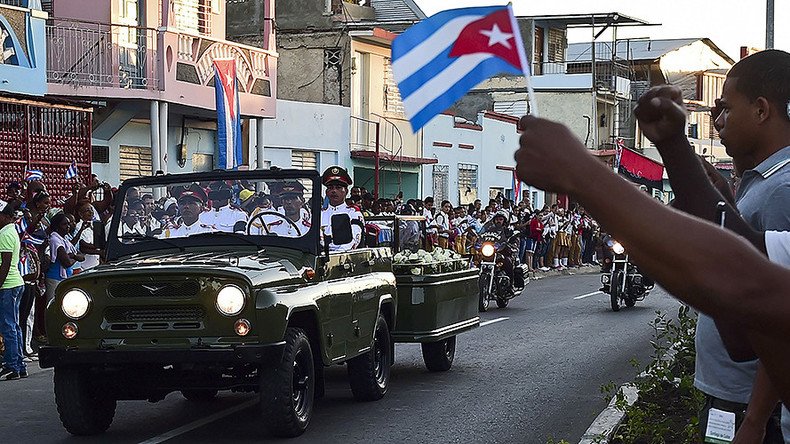Nine days of mourning and a four-day procession across the country ended on Sunday in eastern Cuba, as Fidel Castro was laid to rest next to the country’s independence hero Jose Marti.
Crowds shouting “Viva Fidel!” and “I am Fidel!” lined the streets of Santiago, Cuba’s second-biggest city, as a camouflage-green hearse made its way to Santa Ifigenia cemetery, the resting place of numerous national figures, where a tomb had been secretly constructed during the past months.
A 21-gun salute was fired, as the ashes, clad in a coffin wrapped in the country’s flag, disappeared beyond the gates of the cemetery. The ceremony was not televised, and journalists were not allowed inside.
The 500-mile journey from Havana, where the man who led his country for 49 years died on November 25, was a reverse of his 1959 march on Havana that ended with Castro assuming control of the island. Every aspect of the procession, including the night the hearse spent outside the mausoleum of Che Guevara, had reportedly been planned by Fidel himself before his death at the age of 90.
The public display of mourning culminated on Saturday night, when his brother, 85-year-old Raul Castro, delivered a speech on a square in Santiago packed with tens of thousands of Cubans, many of whom were crying.
“This is the unconquered Fidel who calls us with his example,” said Castro, who assumed full control of Cuba in 2008, following a series of medical setbacks for his brother. “We will overcome any obstacle, turmoil or threat in the building of socialism in Cuba,” he said.
An assembly of current and former world leaders, including Venezuela’s Nicolas Maduro, Bolivia’s Evo Morales, Jacob Zuma of South Africa, and Dilma Rousseff and Luiz Inacio Lula da Silva, the ex-presidents of Brazil looked on, or addressed the crowd.
Raul Castro announced that, since “the leader of the revolution strongly opposed any manifestation of cult of personality,” no places would be named after Fidel, and no monuments erected to him.

